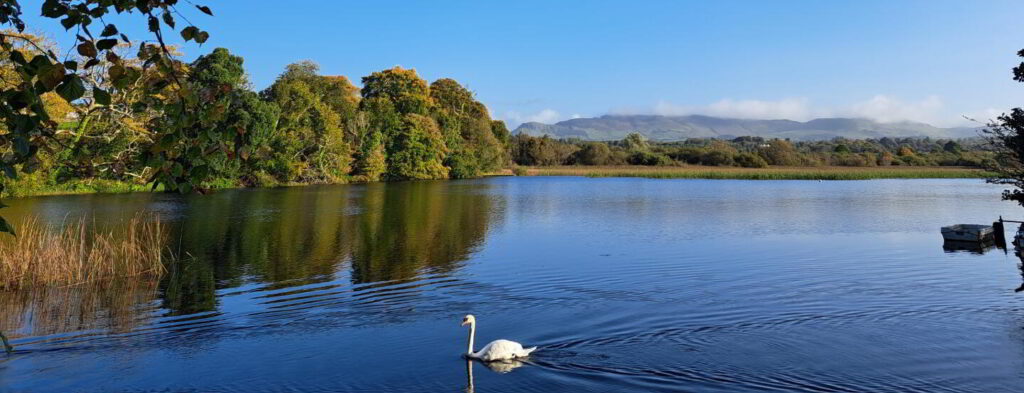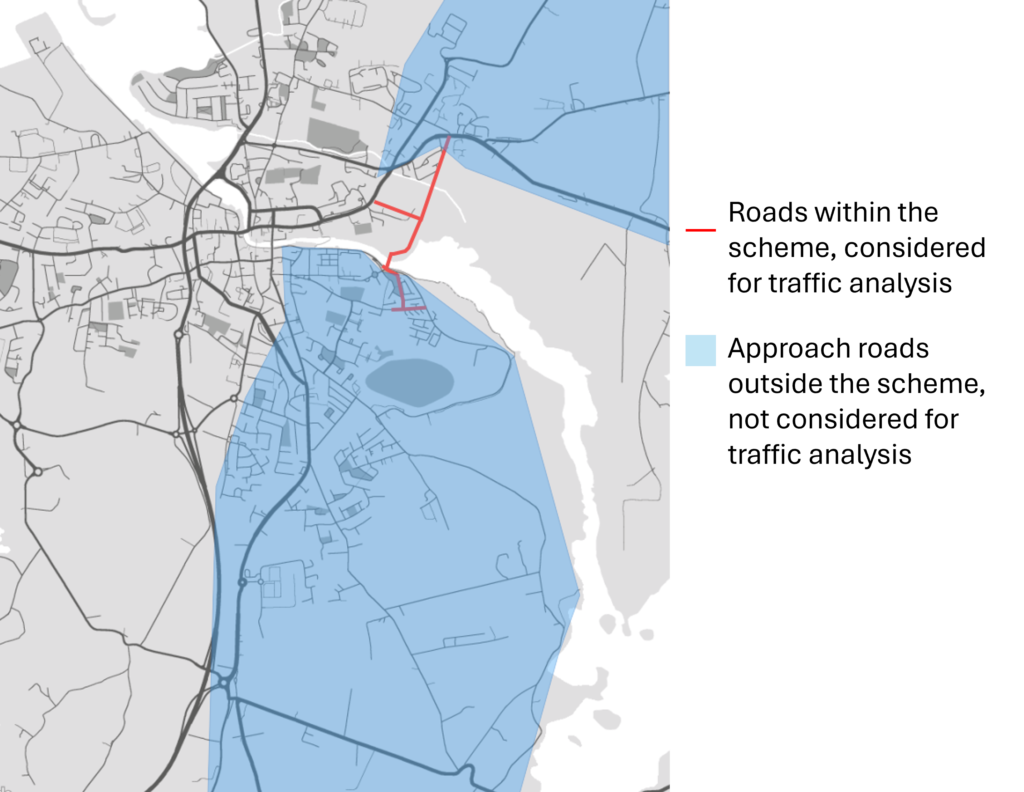FACTS
This would be the tallest bridge relative to its span in the world
At a span of only 60m, the bridge height is 34m. There is no structural or architectural reason for this oversized design, aside from a wish to be “iconic”. The oversized arch uses approximately 170 tonnes of steel, which inflates the budget for the scheme. This height-span ratio is not normally used in bridge design because it wastes material without providing benefit. This is not a good thing, a sign of ambition or good engineering. It is a sign of wastefulness of public money, lack of care for the environment, ignorance of the wishes of the community, and lack of understanding of the beauty of Sligo that it will be blocking. In contrast to the 34m high option the county council chose, they were also given a more appropriate, 3m high option from the same designers.

The design is from 2007, a Celtic Tiger-era idea showing all the excesses and lack of forethought of the time. Typically, this type of overblown design is only executed in dictatorships, where the public have no say on how their taxes are spent and construction projects are about inflating egos of the leaders.

A central feature of bridge design is about minimizing size to ensure costs and material usage are kept low, and so that views are not adversely impacted. A county council committing to building the biggest, least efficient bridge can be compared to ordering the slowest bus in the world, and paying extra for it.
This bridge will be overly expensive
Sligo County Council estimated the cost of this bridge at €35m in 2009. With inflation alone that is now roughly €44m. However building costs in the last decade alone have increased an estimated 50 to 60% putting the cost, at a minimum, at roughly €70m.
Secondly, the unnecessary arch and cables will require expensive, specialist testing and maintenance for the entirety of the bridge lifespan. Since the arch is at such a high slope, workers most likely won’t be legally allowed to scale it and it will require scaffolding. The entire bridge will then need to be shut down for these inspections and maintenance.
This is another example of incompetence shown with public money.
The bridge will kill swans and other protected species
Lough Gill is a designated Special Area of Conservation noted for the high number of rare or scarce animal and plant species. Putting an unnecessary, high arch with cables at along this habitat creates a huge danger for birds. Swans and other birds’ eyes are located on the sides of the head, which protects against dangers in nature but means they have poor forward vision. This makes them susceptible to flying into cables.
The Samuel Beckett Bridge in Dublin causes the death of one to two swans a week. In Lough Gill, with more wildlife than the Liffey, this number would be greater.

It will not solve traffic problems
The roads scheme does not consider the increase in traffic for approach roads leading to the scheme. Statements from the council contradict themselves – that this is a local scheme that will only be used by local residents and also that this is a vital piece of infrastructure for the county. It can’t be both.
 If this is a scheme for local residents, then why are tens of millions being spent for something that has been fought from day one by those same residents? If this will carry the 20,000 cars a day that was predicted in 2007, where will these cars go?
If this is a scheme for local residents, then why are tens of millions being spent for something that has been fought from day one by those same residents? If this will carry the 20,000 cars a day that was predicted in 2007, where will these cars go?
Sligo County Council’s plan for these approach roads is to build the scheme and then see how much new traffic is created. When these residential streets are overwhelmed, they plan to widen them in the hope that this will reduce traffic.
Not only will this draw more of the existing car traffic onto residential streets, but it will also create new, induced traffic, as is the case with urban road bridges.
We can look to the disastrous scheme costing €74m on the west of town to see what will happen if the Eastern Garavogue Bridge is built. Proposed to solve congestion, it has greatly added to it, with traffic backed up daily to Summerhill roundabout. More roads do not solve congestion, they add to it. This phenomenon has been understood and documented for almost 100 years. Making towns car-centric leads to a hollowing out of the centres, as can be seen with Sligo’s vacancy rates.
Sligo’s residential communities cannot be sacrificed to the needs of car-dominated planning objectives. These residential roads are at capacity and already under pressure.
The people of Sligo have fought this design since it was first shown
Residents have fought the bridge, been lied to, ignored, and blackmailed throughout the years.
The residents will have to deal with the dead swans caused by the oversized design. They will suffer from their streets becoming rat runs and their views being overshadowed. Sligo will suffer from the main access to Doorly Park being through a bridge underpass.
The arch is unnecessary
Below are two of the options given to Sligo County Council by the bridge designers in 2007. One with a massive, unnecessary arch that will kill wildlife, block views, be expensive to construct and maintain, dwarf everything around it and waste material.
The other is a sympathetic design for an area of natural beauty, not squandering material and money in a hope to look “iconic”.
SCC chose the biggest possible design to the detriment of the people of Sligo and the environment.


To construct this unnecessary arch alone uses the equivalent in carbon of 1000 transatlantic flights. Ireland will be fined up to €27bn for continuously missing emissions targets. Projects like this are part of the reason why.